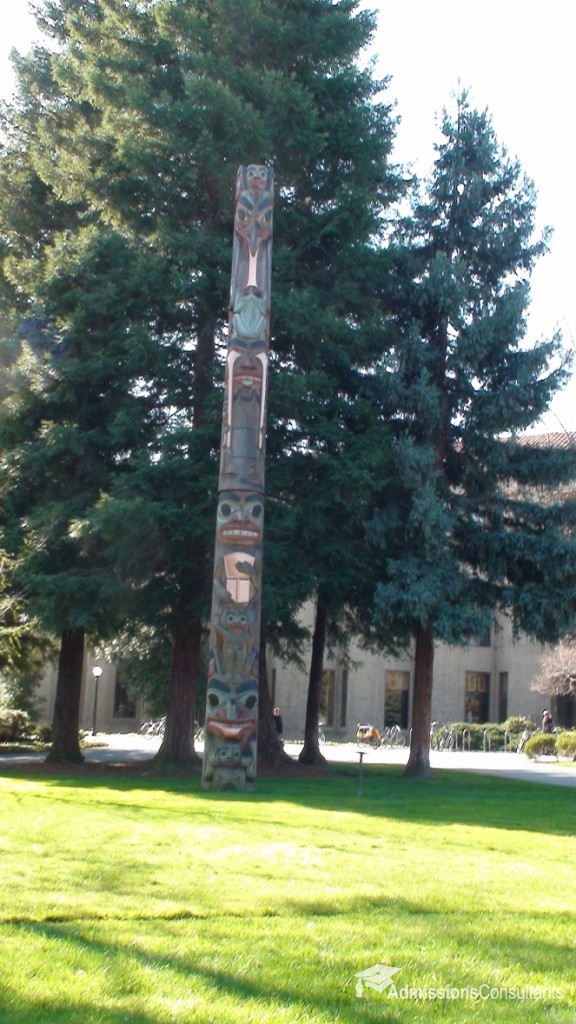 Stanford Law School, or SLS, was founded in 1893 in Palo Alto, California. Stanford is one of the smaller top-tier law schools and, with over 550 students, they are able to keep class sizes small and maintain a fairly low student to faculty ratio. Nearly 200 faculty members, including 101 full-time faculty, are on hand to guide students through the Stanford Law experience.
Stanford Law School, or SLS, was founded in 1893 in Palo Alto, California. Stanford is one of the smaller top-tier law schools and, with over 550 students, they are able to keep class sizes small and maintain a fairly low student to faculty ratio. Nearly 200 faculty members, including 101 full-time faculty, are on hand to guide students through the Stanford Law experience.
Students at Stanford Law School can study to receive their J.D., LL.M. or J.S.D. degrees. The most popular areas of study are clinical training, environmental law, intellectual property law and international law. Stanford is also well-known for letting its students devise their own study plans. There are also three types of joint degree in 21 subject areas. Many of these joint degrees can still be completed in three years. Students also have the chance to complete joint degree programs with Princeton University’s Woodrow Wilson School of Public and International Affairs or the Johns Hopkins Paul H. Nitze School of Advanced International Studies.
 Students who are completing a regular J.D. degree must take several mandatory classes during their first year, including criminal law, civil procedure, contracts, torts and legal research and writing during the fall quarter, and constitutional law, property and federal litigation during the winter quarter. After they have completed their first year, students can customize their study plans to focus in on a specific legal area. Classes for second and third years range from topics like white-collar crime to a Supreme Court simulation seminar. The Supreme Court clinic was the first of its kind; it has brought more than 260 cases before the court since its founding in 2004. Also, more than 80% of students participate in some sort of pro bono or public interest activities through the Levin Center for Public Service and Public Interest Law. Students can help victims of domestic violence, at-risk youth or senior citizens.
Students who are completing a regular J.D. degree must take several mandatory classes during their first year, including criminal law, civil procedure, contracts, torts and legal research and writing during the fall quarter, and constitutional law, property and federal litigation during the winter quarter. After they have completed their first year, students can customize their study plans to focus in on a specific legal area. Classes for second and third years range from topics like white-collar crime to a Supreme Court simulation seminar. The Supreme Court clinic was the first of its kind; it has brought more than 260 cases before the court since its founding in 2004. Also, more than 80% of students participate in some sort of pro bono or public interest activities through the Levin Center for Public Service and Public Interest Law. Students can help victims of domestic violence, at-risk youth or senior citizens.
 Many Stanford Law School students participate in one of the 11 clinics on campus, where students have more chances to gain real-life experience. Those interested in business and corporate law can become involved in the Rock Center for Corporate Governance, perhaps one of the reasons Stanford produces so many corporate lawyers. Those interested in intellectual property law can explore relationships between the Internet and our culture through the Center for Internet and Society or the Cyberlaw Clinic. Environmental law students can participate in the Environmental Law Clinic or write for the “Stanford Environmental Law Journal.”
Many Stanford Law School students participate in one of the 11 clinics on campus, where students have more chances to gain real-life experience. Those interested in business and corporate law can become involved in the Rock Center for Corporate Governance, perhaps one of the reasons Stanford produces so many corporate lawyers. Those interested in intellectual property law can explore relationships between the Internet and our culture through the Center for Internet and Society or the Cyberlaw Clinic. Environmental law students can participate in the Environmental Law Clinic or write for the “Stanford Environmental Law Journal.”
Stanford Law School is also well-known for its International Law program, because of the school’s proximity Silicon Valley and San Francisco. There is also the International Human Rights and Conflict Resolution Clinic and the Immigrants’ Rights Clinic. Students can also take part in one of the twelve legal journals published, compete in the Kirkwood Moot Court competition or join any of the over 60 student organizations on campus. Individuals who want a smaller student population but are still interested in a multitude of off-campus opportunities should look into Stanford Law School.
2023 acceptance rate: 7.26%
Number of 2023 applicants: 4,863
Number of 2023 matriculants: 157
Median LSAT: 173
Median GPA: 3.95
LSAT range (25 to 75 percentile): 171 to 175
GPA range (25 to 75 percentile): 3.83 to 3.99
The final application deadline is February 15.
Matriculating SLS students must start in the fall.
Tuition (2023-2024): $71,610
Room, board, and other (2023-2024): $46,049
Total estimated cost of attendance (2023-2024): $117,659
Students who receive grants: 59%
Median grant amount: $34,199
![]() Conditional Scholarships
Conditional Scholarships
SLS does not award law school scholarships that may be reduced or eliminated based on academic performance other than failure to maintain good academic standing.
Employment Statistics
Employed full-time, long-term, bar passage required: 84.2%
Employed full-time, long-term, JD advantage: 4.9%
Career Placement Results
BigLaw: 37.7%
Federal Clerkships: 26.2%
Transfers
Net Transfers: +6
Transfers Out: -0-
Average Bar Passage Differential (first-time takers): 17.35%
Class Size Analysis
Under 25: 69%
25-49: 21%
50-74: 6%
75-99: 3%
100+: 1%

- Crown Quadrangle 559 Nathan Abbott Way Stanford, CA 94305
- (650) 723 – 2465
- admissions@law.stanford.edu
- https://law.stanford.edu/











